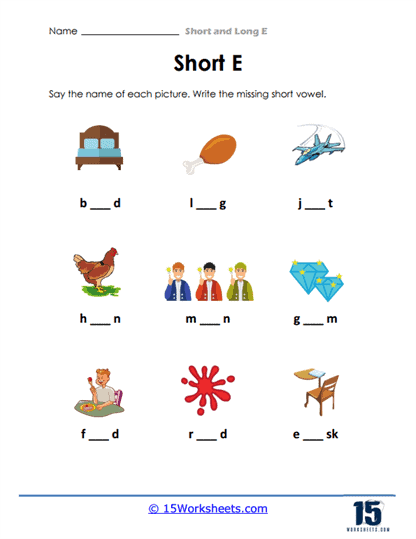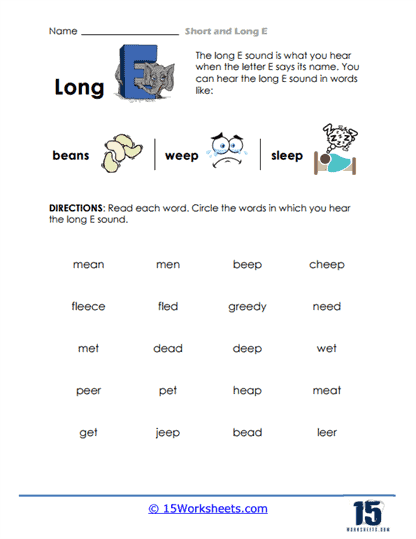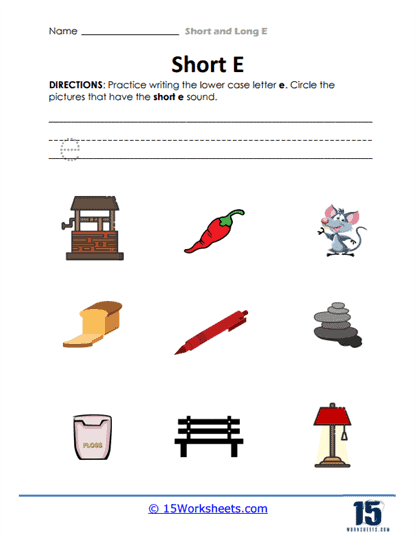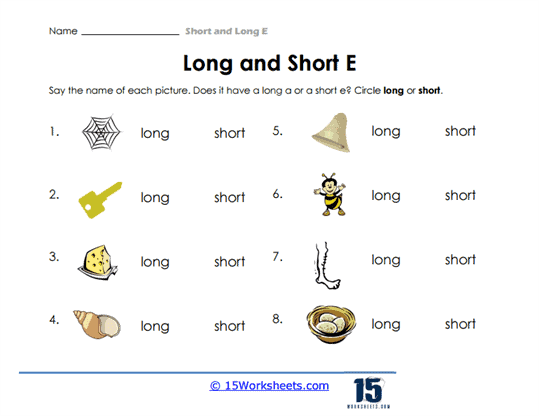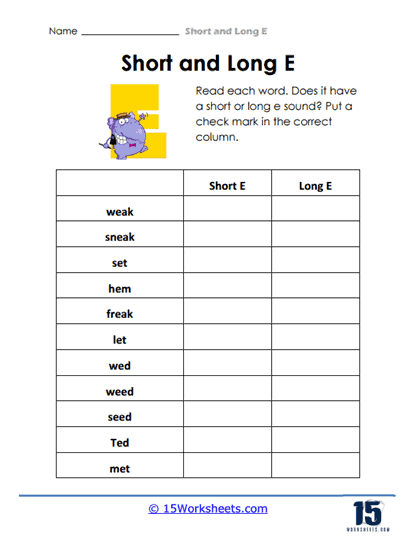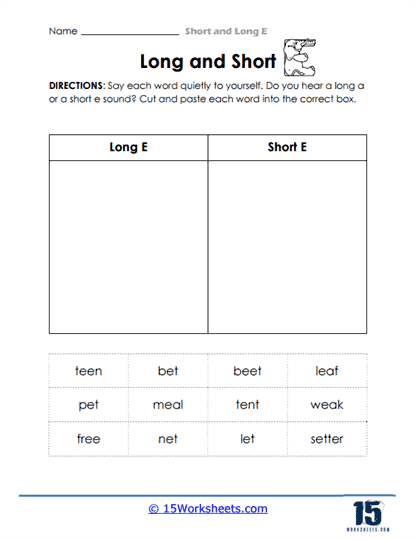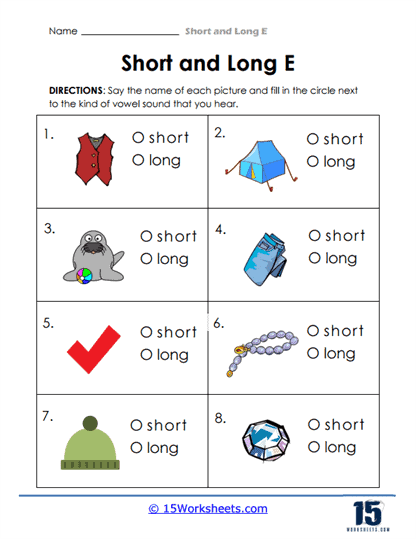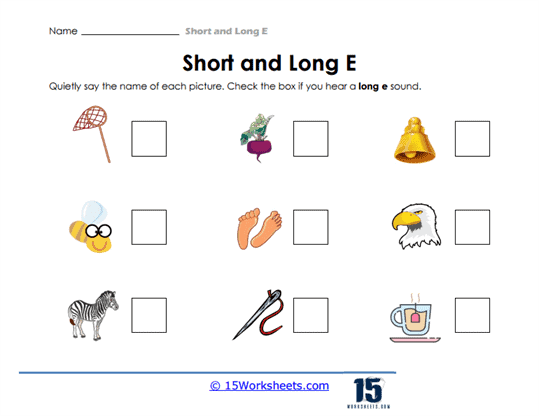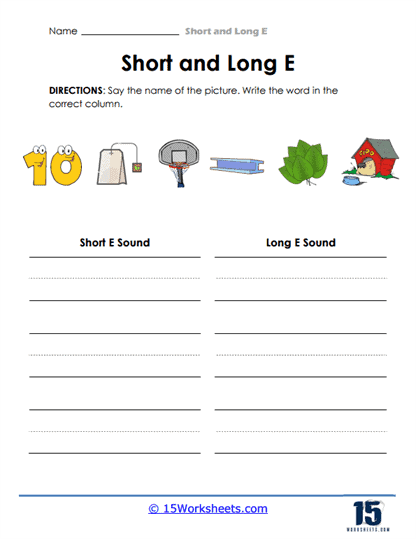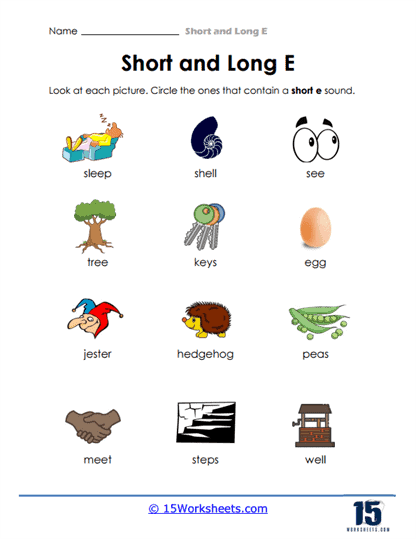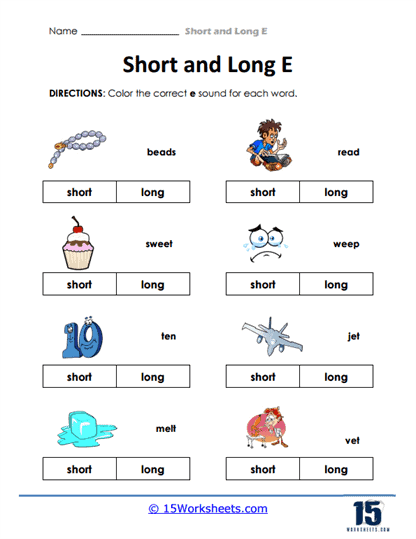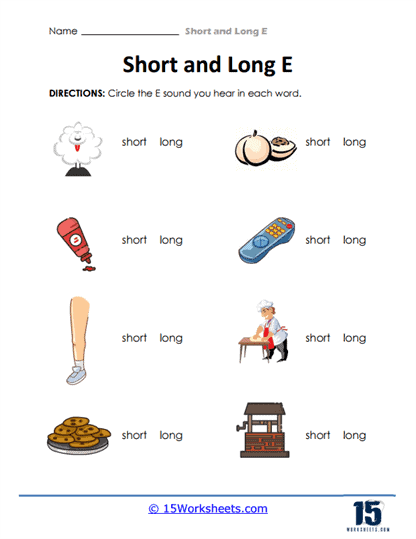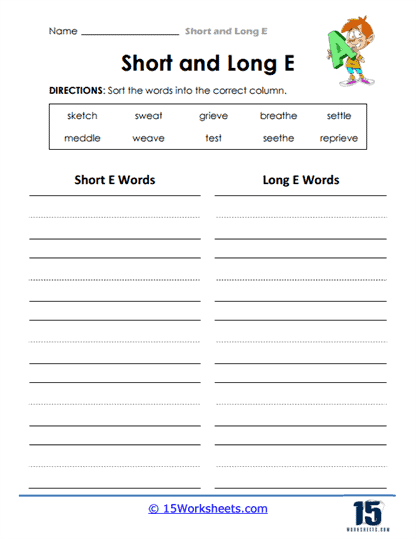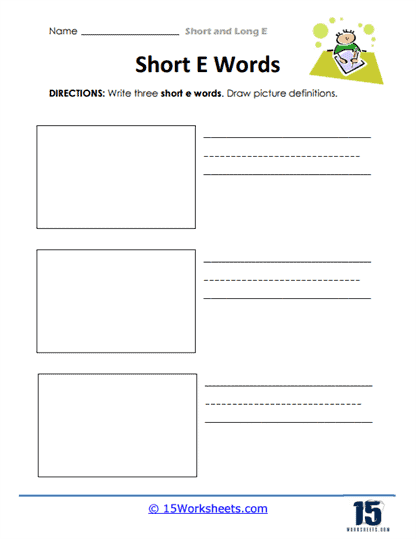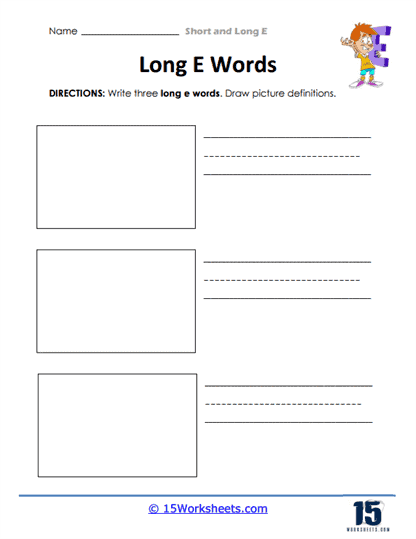Short and Long E Worksheets
All About These 15 Worksheets
Understanding the distinction between short and long vowel sounds, particularly the E sound, is a fundamental skill in early literacy and phonics. It forms the basis for decoding words and is essential for successful reading, spelling, and overall language development.
To support students in mastering this crucial phonemic awareness skill, we present a collection of Short and Long E worksheets. These worksheets have been thoughtfully designed to provide students with structured and engaging opportunities to practice and refine their understanding of short and long E sounds.
These are super fun worksheets filled with games, pictures, words and more, that will help you become a wizard with the sounds of the letter ‘E’. Did you know that the letter ‘E’ can make two different sounds?
What Are Short And Long E Sounds?
The first sound the letter ‘E’ can make is its short sound, like in the words “pen” or “red”. It’s like the ‘e’ sound in “elephant”. Can you say “eh”? Great job!
The second sound the ‘E’ can make is its long sound, like in the words “tree” or “see”. This sounds just like the name of the letter ‘E’. Can you say “ee”? Amazing!
There are different types of exercises and fun activities in these worksheets to make you a pro at this. Let’s see what kinds of things you will find!
Word Lists – These are lists of words that either have a short ‘E’ sound or a long ‘E’ sound. You can practice reading them out loud. Try to listen to the sound the ‘E’ makes in each word.
Matching Games – This is a fun one! Here, you might have to match words to pictures. For example, if you see a picture of a “bed”, you would match it with the word “bed”.
Fill in the Blanks – In this game, you’ll see sentences that have words missing, and you’ll have to fill in the blanks with words that have the short ‘E’ or long ‘E’ sound. This will help you understand how these words fit into sentences.
Coloring Pages – Yes, coloring! Some worksheets will have pictures of items, and you’ll color the ones that have the short ‘E’ sound one color, and the ones with the long ‘E’ sound another color. Like coloring a “net” red for short ‘E’ and “bee” blue for long ‘E’.
Cut and Paste – For these activities, you might have to cut out pictures or words and paste them in the correct category – short ‘E’ or long ‘E’. Remember to be careful with the scissors!
Word Search Puzzles – Just like treasure hunting! You get to find words with short ‘E’ and long ‘E’ sounds hidden among lots of other letters.
Rhyming Words – In this game, you’ll find pairs of words that rhyme together. This is fun and can help you notice the ‘E’ sounds in different words.
As you work through these activities, remember to say the words out loud. It’s a super trick to help you remember the sounds better. And guess what? It’s completely okay to find some words tricky at first. Even superheroes need practice to be amazing at what they do!
Examples of the Long E Sound
“Tree” – In the word “tree”, the ‘E’ makes the long vowel sound, pronounced the same as the name of the letter ‘E’. The reason for this is the “double vowel” rule, which states that when two vowels go walking, the first one does the talking. Here, the two ‘E’s walk together, and the first ‘E’ says its name, making it the long ‘E’ sound.
“Beet” – Similar to “tree”, the word “beet” also has two ‘E’s walking together. Again, the first ‘E’ says its name, giving us the long ‘E’ sound.
In both “tree” and “beet”, the ‘E’ is pronounced as ‘ē’, which is characteristic of a long vowel sound. This “double vowel” rule doesn’t apply to all English words but it does in a good number of cases, making it a helpful rule for learners of English reading and spelling.
Examples of the Short E Sound
“Pen” – In the word “pen”, the ‘E’ makes the short vowel sound, pronounced like ‘e’ in “hen” or “ten”. In English phonics, a common rule is when a vowel is sandwiched between consonants within a word, it usually makes a short vowel sound. So, in “pen”, the ‘E’ is between the consonants ‘p’ and ‘n’, making it sound like a short ‘E’.
“Bed” – Similar to “pen”, the word “bed” also has a short ‘E’ sound. Again, the ‘E’ is in between two consonants, ‘b’ and ‘d’. This fits the pattern where the vowel is short when it is between consonants.
In both “pen” and “bed”, the ‘E’ is pronounced as ‘ĕ’, which is characteristic of a short vowel sound. Remember, English has many exceptions, but this pattern can guide learners in a majority of cases. Understanding the short and long vowel sounds is a key step towards achieving reading fluency.
The Importance of Short and Long E
Understanding the difference between short and long vowel sounds, particularly the E sound, is of paramount importance for several reasons:
- Reading Proficiency: Accurate recognition of short and long E vowel sounds is crucial for fluent reading. It enables students to decode words correctly and comprehend text effectively.
- Spelling Competence: Proficiency in distinguishing short and long E vowel sounds enhances students’ spelling skills. When they can differentiate between these sounds, they are better equipped to spell words accurately.
- Phonemic Awareness: Recognizing short and long E vowel sounds fosters phonemic awareness, which is the ability to identify and manipulate individual phonemes (sounds). This skill is critical for literacy development and reading comprehension.
- Vocabulary Growth: Learning the nuances of short and long E vowel sounds exposes students to a broader range of words, enriching their vocabulary and comprehension.
This collection of Short and Long E worksheets is a valuable resource for educators and parents committed to supporting their students’ phonics and literacy development. Proficiency in distinguishing between short and long vowel sounds, particularly the E sound, is a foundational skill that opens the doors to reading fluency, comprehension, effective spelling, and vocabulary growth.
By using these engaging worksheets, students will strengthen their ability to recognize and use short and long E sounds with confidence. This collection is an investment in their future success, ensuring they have a solid foundation in phonemic awareness, phonics, spelling, and vocabulary.

